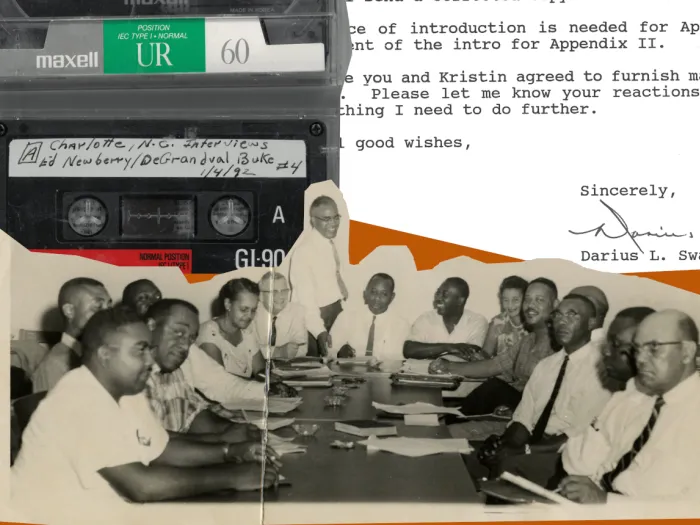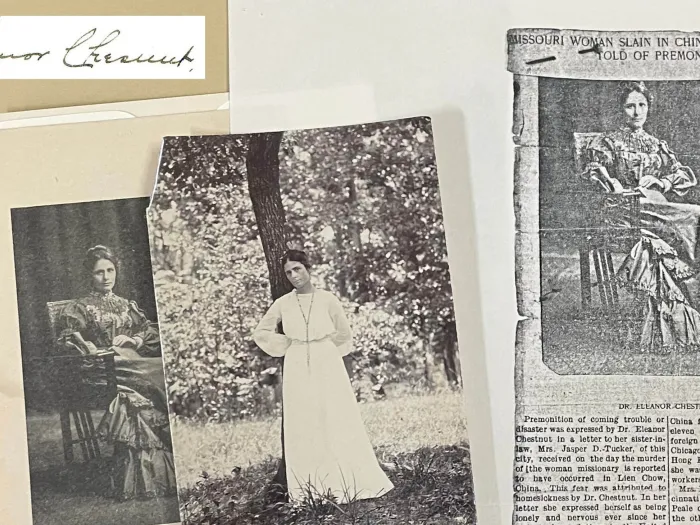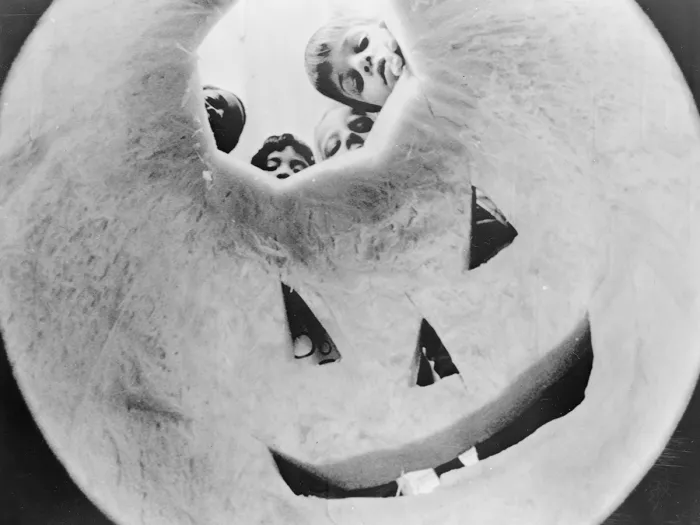CIVIL RIGHTS SUPPORTERS EXPRESS VICTORY HOPES WASHINGTON, D.C. [Pearl ID: islandora:348444]
July 2, 2024 was the 60th anniversary of the passing of the Civil Rights Act of 1964. The culmination of decades of Black activism and public pressure, in defiance of political resistance and racist violence, the 1964 bill was the most impactful legislation for human and civil rights in the United States since Reconstruction.
The Religious News Service was not an impartial observer of the campaign for the 1964 bill. They were laudatory in their coverage of Martin Luther King, Jr. and the many other religious leaders lobbying in the bill’s favor in 1963 and 1964. At the same time, RNS perpetuated the discriminatory logics and language of respectability politics and reactionary deference to law and order. Other leaders who did not meet the white establishment’s conception of a good civil rights leader - Malcolm X, the Rev. Jesse Jackson, Angela Davis, etc. - did not receive such glowing reception; RNS viewed participants in Black uprisings as nothing more than rioters and anonymous perpetrators of urban violence. Sixty years later, we should acknowledge these failings in press coverage as much as we remember and celebrate the triumphs of the civil rights movement.
Thanks to a grant from Lilly Endowment Inc., PHS is developing a prototype exhibit featuring images from the Religious News Service Photograph Collection that will be on display during the Religion News Service’s 90th anniversary event this fall. This exhibit will highlight RNS coverage of lesser known civil rights workers, segregation in schools and churches, the advancement of Black clergy in American churches, and the now often forgotten campaigns of political rhetoric and physical violence against the civil rights movement in the early 1960s. This blog post is a preview of what’s to come and a timeline of the last 13 months of the long struggle toward the 1964 bill.
--
June 1963
John Kennedy: Race is a ‘moral crisis.’ Making good on campaign promises to Black voters, John F. Kennedy invokes the Scriptures as well as the Constitution during a televised speech from the Oval Office calling for passage of the Civil Rights Act.
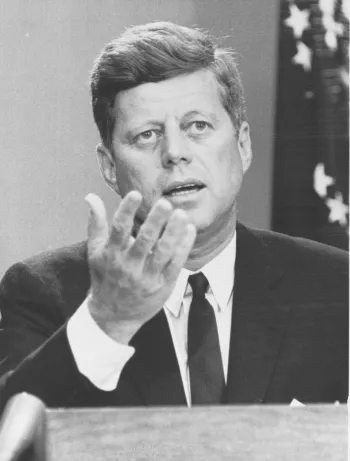
--
August 1963
March on Washington. One of the largest demonstrations in American history, more than 200,000 turn out for the March on Washington for Jobs and Freedom headlined by Martin Luther King, Jr. RNS coverage focuses on religious leaders and messaging.
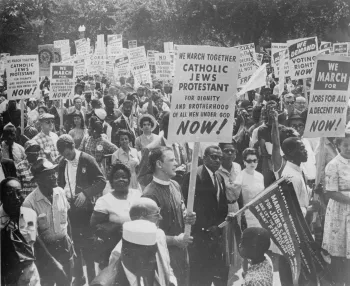
--
September 1963
Boston picket Birmingham bombing. After the 16th Street Baptist Church bombing in Birmingham, Lutheran minister Vernon E. Carter leads a Boston picket during national protests against racist political violence.
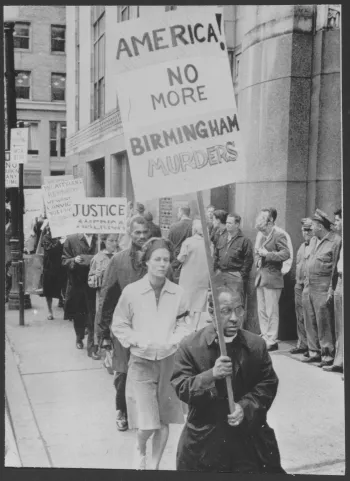
--
December 1963
NCC delegates press for civil rights legislation. Religious leaders take time out from the National Council of Churches’ General Assembly meeting in Philadelphia to lobby in Washington for the Civil Rights Act.
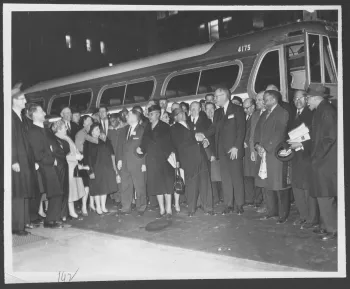
--
February 1964
New York student boycott. Students strike in protest of school segregation. When not picketing, many strikers spent the day in “freedom schools” in local churches.
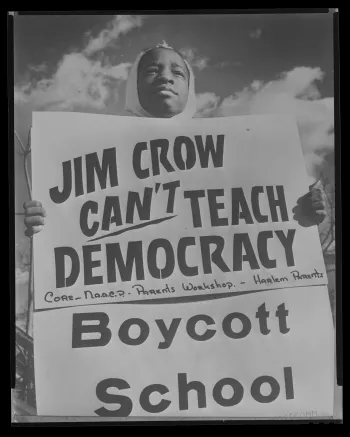
--
April 1964
Civil rights prayer vigil. An interreligious group of seminarians begin a prayer vigil outside the Lincoln Memorial, planned to last until the Civil Rights Act is signed into law.
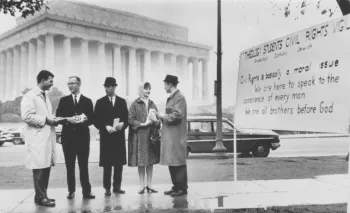
--
June 1964
Rights bill thanksgiving service. Religious leaders hold a thanksgiving service after the Civil Rights Act finally passes out of the Senate and back to the House for ratification of amendments.
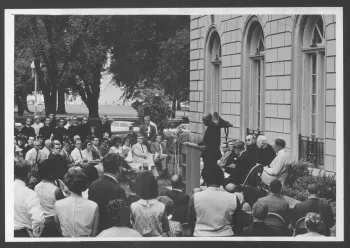
NCC trains students for Mississippi program. College students volunteering to run voter drives and education efforts during Freedom Summer in Mississippi receive training from the National Council of Churches’ Commission on Religion and Race.
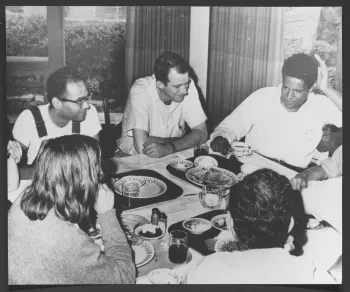
--
July 2, 1964
President Johnson signs the Civil Rights Act into law. President Johnson gives the Rev. Martin Luther King, Jr. one of the pens he used to sign the Civil Rights Act of 1964 as a memento of the victory.
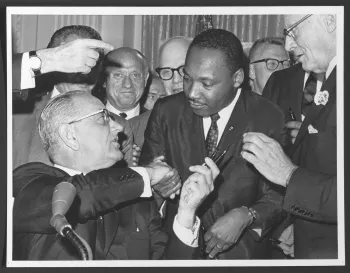
--
Even as the Civil Rights Act was finally signed, RNS coverage reminds the nation that the work is ongoing. The rest of 1964 and 1965 saw continued demonstrations for the rights of Black Americans as well as undaunted protests against integration, bombings of churches where civil rights groups met, and renewed terroristic violence against civil rights workers.
You may freely reuse and distribute this article in its entirety for non-commercial purposes in any medium. Please include author attribution, photography credits, and a link to the original article. This work is licensed under a Creative Commons Attribution-NonCommercial-NoDeratives 4.0 International License.

